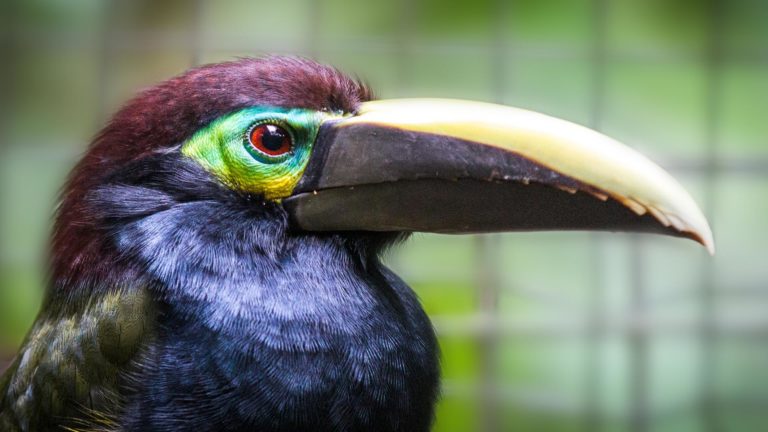Yellow-eared Toucanet Selenidera spectabilis
Taxonomy
Scientific name:
Selenidera spectabilis
Family:
Ramphastidae
Genus:
Selenidera
Species:
Spectabilis
Common names:
Yellow-eared toucanet
Biology
Morphology:
Yellow-eared toucanets have bright olive green wings and back while the head and lower parts are black. They have a bluish gray slate tail. Males have yellow auricular streaks (feathers covering the ears) which are absent in females. Females have a brown crown. They have a relatively large beak with a black basal line. The upper mandible is olive-brown to blackish with the upper portion yellowish green. The legs are bluish gray. They measure 36 to 38 cm in length and weigh 220 g on average.
Reproduction:
Yellow-eared toucanets nest in natural tree cavities. They lay 2 to 4 eggs which are incubated by both parents in 16 days. Both parents feed the babies fruit for up to 8 weeks.
Diet:
They feed mainly on a variety of fruits but occasionally they also eat insects or small vertebrates.
Ecology
Range:
They are found from the north of Honduras (La Mosquitia) south through Central America to the center-west of Colombia and north-west of Ecuador.
Habitat:
They live in humid forest between 300 and 1,500 m altitude and in adjacent wooded areas.
Threats
Habitat destruction is the biggest threat. IUCN Red List: Least concern.

